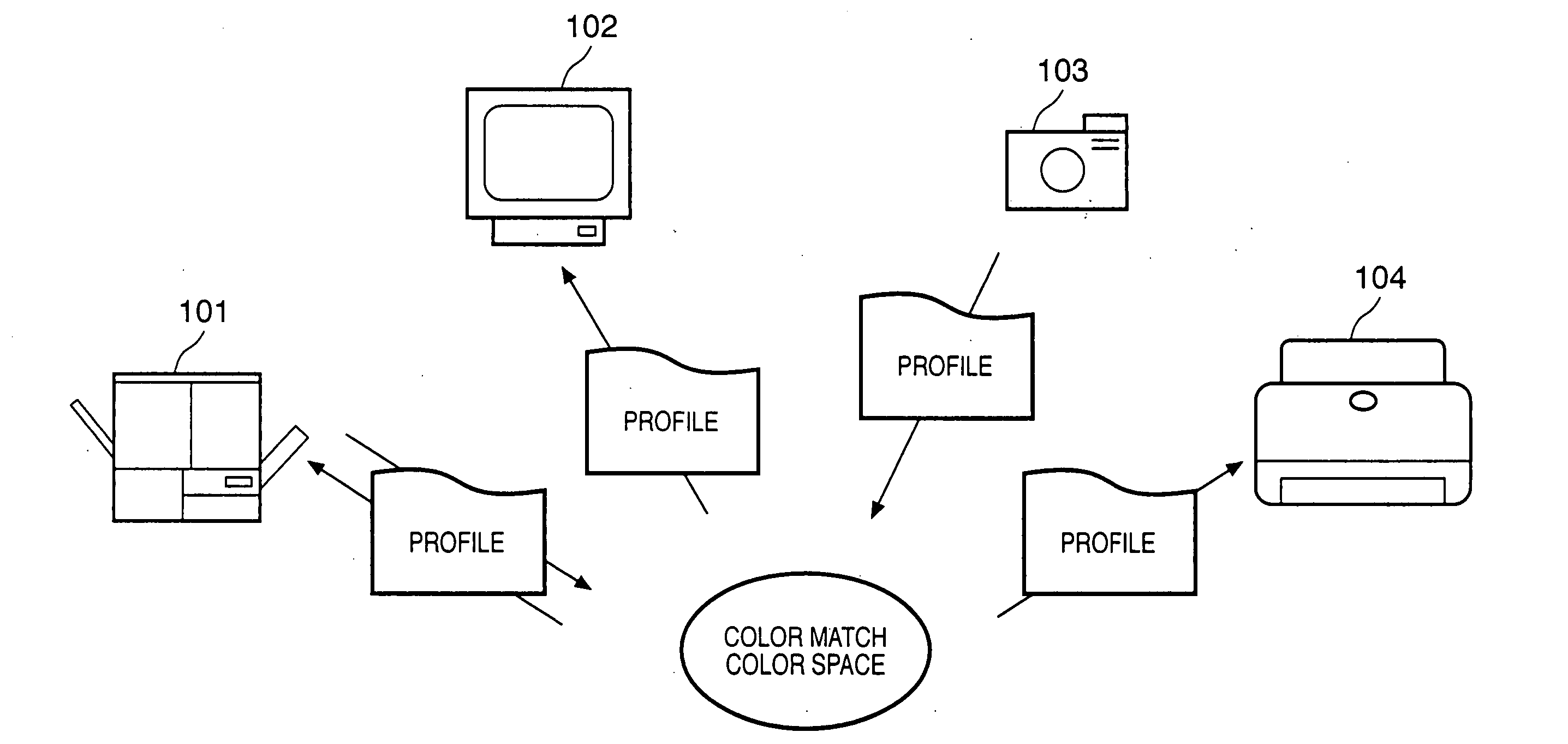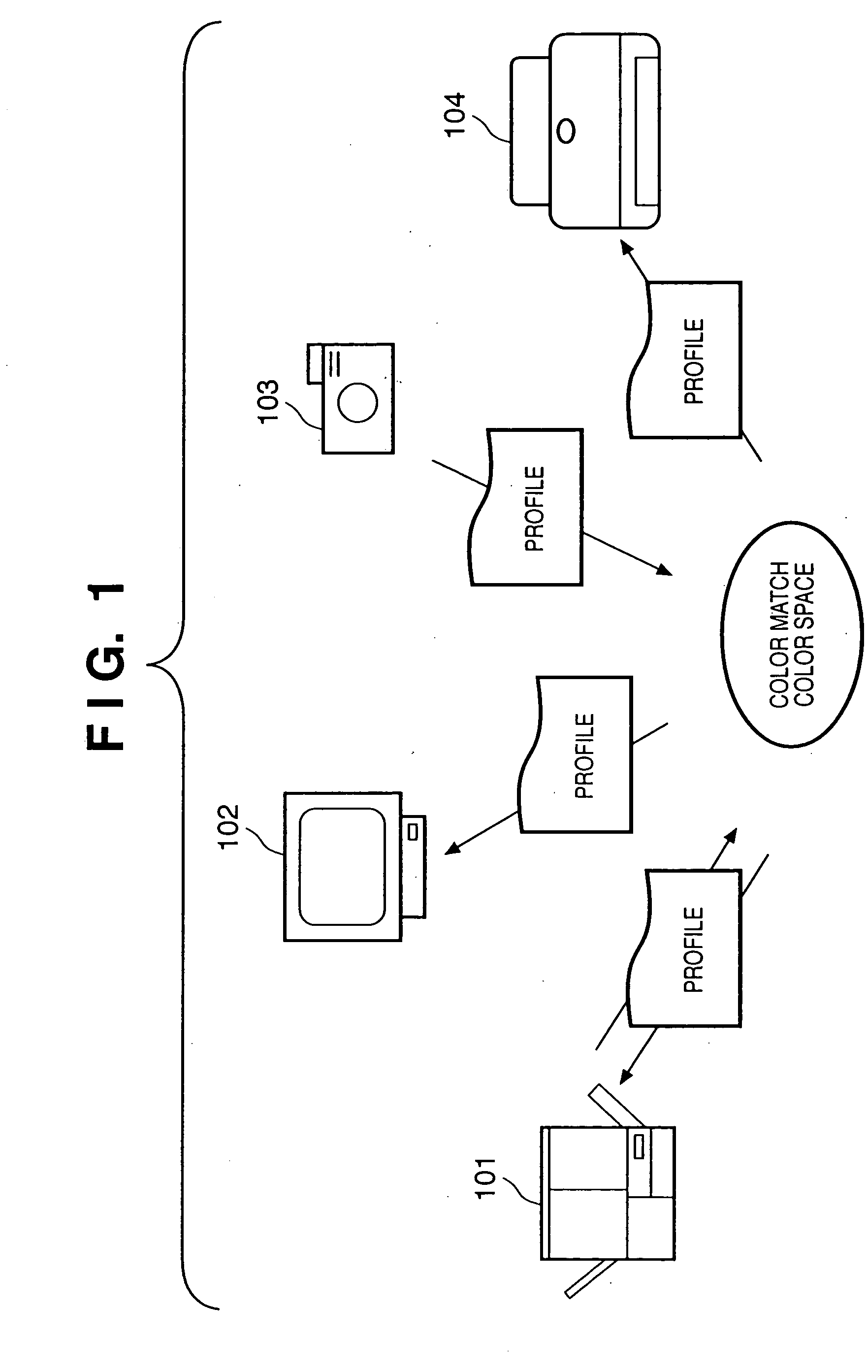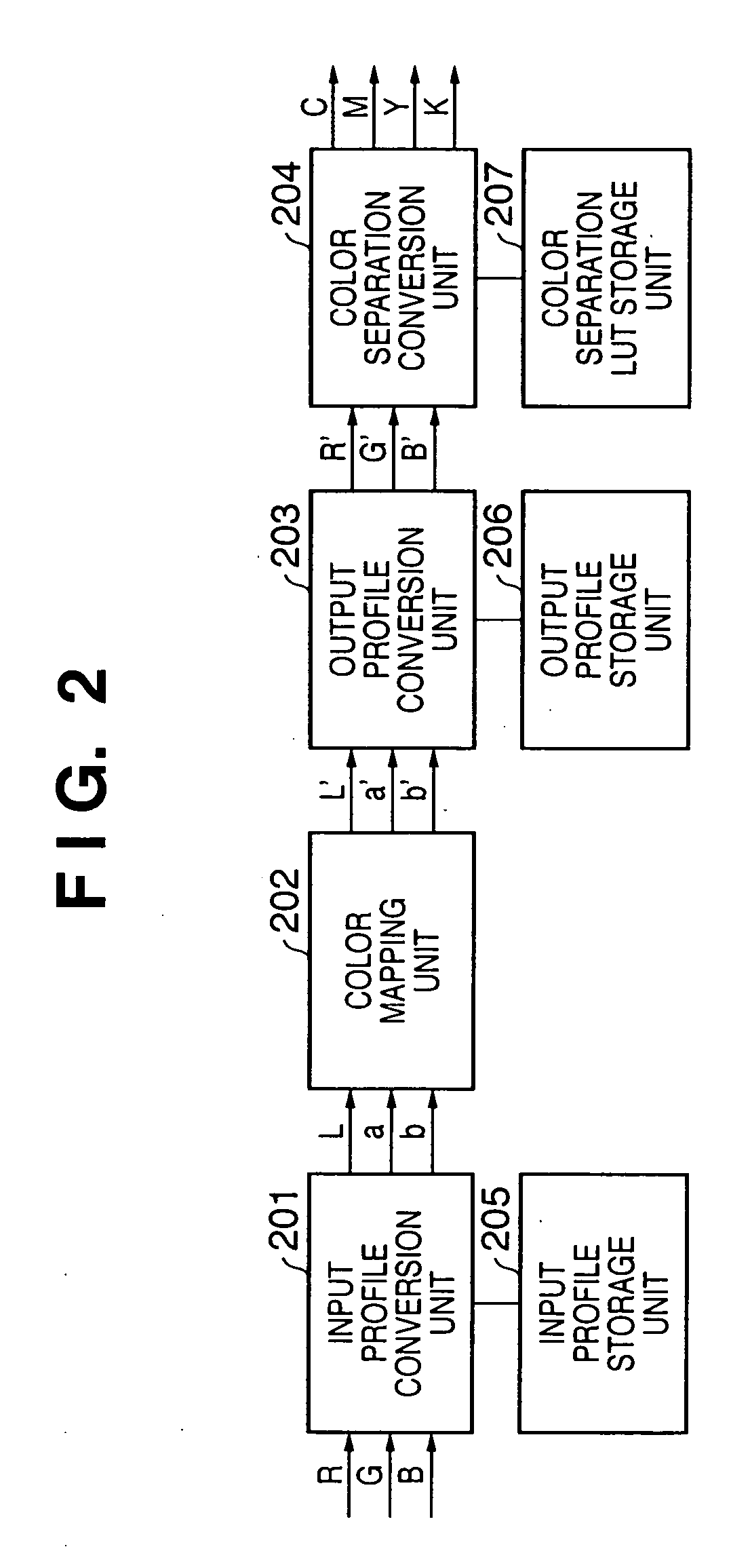Color conversion method and profile generation method
a conversion method and color technology, applied in the direction of digitally marking record carriers, color signal processing circuits, instruments, etc., can solve the problems of often obtained adjustment results, inability to control the tincture of printed images in order, and inability to adjust the tinctur
- Summary
- Abstract
- Description
- Claims
- Application Information
AI Technical Summary
Benefits of technology
Problems solved by technology
Method used
Image
Examples
first embodiment
[0044] The first embodiment will exemplify an image processing apparatus which generates a profile used to print an input monochrome image in a desired color without any tincture deviation in a print process using a color management system (hereinafter referred to as a CMS).
[0045]FIG. 1 is a view for explaining an overview of the CMS. The CMS is primarily a color processing technique that allows a plurality of image input / output apparatuses (e.g., a color copy 101, color monitor 102, digital camera 103, color printer 104, and the like) to satisfactorily reproduce an identical color image. According to the CMS, a color signal of an input system is converted into that of an output system. More specifically, an input color signal depending on an input system apparatus is converted into a signal on a color match color space, which is independent of any apparatuses using a predetermined conversion formula or table that pertains to the input system apparatus. The predetermined conversion...
second embodiment
[0083] The second embodiment of the present invention will be described in detail hereinafter with reference to the accompanying drawings.
[0084] An image processing apparatus of the second embodiment converts monochrome image data into color image data which can be printed with a desired tincture without any color deviation upon printing the monochrome image by a designated image output apparatus. Note that the basic arrangement of the image processing apparatus in the second embodiment is the same as that of the first embodiment explained using FIG. 3, and a description thereof will be omitted.
[0085]FIG. 14 is a block diagram showing the functional arrangement of the image processing apparatus in the second embodiment. As shown in FIG. 14, the apparatus comprises, as the functional arrangement, a grayscale characteristic conversion module 1401, tincture conversion A module 1402, tincture conversion B module 1403, output profile conversion module 1404, tincture adjustment value se...
second embodiments
Modification of First and Second Embodiments
[0096] In the first and second embodiments mentioned above, the tincture conversion A module (403 in FIG. 4, 1402 in FIG. 14) converts the lightness value L* converted by the grayscale characteristic conversion module (402 in FIG. 4, 1401 in FIG. 14) into a distance signal 1 on the gray line. Alternatively, the tincture conversion A module may convert a monochrome signal GL into a distance signal 1 without temporarily converting it into lightness L*.
[0097]FIG. 18 is a block diagram partially showing the functional arrangement of the image processing apparatus in a modification of the first and second embodiments. Note that the functional modules other than a grayscale characteristic conversion module 1801, tincture conversion A module 1802, and tincture conversion B module 1803 are not shown in FIG. 18, and are the same as those in the first and second embodiments.
[0098] The tincture conversion A module 1802 in this modification converts...
PUM
 Login to View More
Login to View More Abstract
Description
Claims
Application Information
 Login to View More
Login to View More - R&D
- Intellectual Property
- Life Sciences
- Materials
- Tech Scout
- Unparalleled Data Quality
- Higher Quality Content
- 60% Fewer Hallucinations
Browse by: Latest US Patents, China's latest patents, Technical Efficacy Thesaurus, Application Domain, Technology Topic, Popular Technical Reports.
© 2025 PatSnap. All rights reserved.Legal|Privacy policy|Modern Slavery Act Transparency Statement|Sitemap|About US| Contact US: help@patsnap.com



